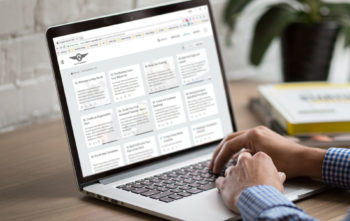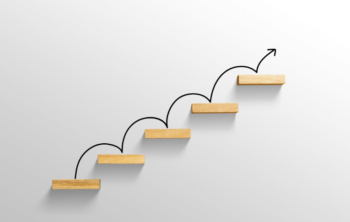Picture this: You’re a sales rep starting at a new company. You’re excited, but you’re also daunted by the prospect of learning the ins and outs of all the products you’re expected to pitch in the market place. What’s worse is the firm you’re now representing operates mainly in the technical space. You’re confident in your abilities, but you’d hit you’d be kicking solid goals so much sooner if you had a way to fast track your learning.
The good news is such a thing does exist. They’re called Sales Battle Cards, and Way We Do now has sales templates you can access as part of your regular subscription.
What are sales battle cards?
It can take anywhere from six to 12 months for a new sales person to find their groove and develop an effective selling routine. Sales battle cards are like Cliff Notes for your business, and they can give your team the insights they need to bring in more business sooner.
Their name comes from the notion of preparing your sales “warriors” for “going into battle” in a highly competitive market place. The cards give them the information they need to customize a successful plan for each pitch they make.
Who should use battle cards?
While sales battle cards will include the basic information you may have already included in your client-focused marketing, they are designed specifically for your sales team. Sales battle cards are a “single source of truth” for the products and services your sales people are presenting. No more having to learn where to find what product information while they’re on an important sales call (Which volume of the product manual? Or is it in the online repository?!) Just streamlined knowledge and expertise at their fingertips.
The information you need on a good sales battle card includes things like:
- how the product or service is delivered
- who the product or service is designed for (target market)
- the product’s availability, lead and follow-up times; if you’re offering a service, how it’s delivered
- a description of the benefits of each feature, and the feelings or pain points these address
- pricing, including margins and other key financial data
- what falls in and out of scope
- who your competitors are and how you differ
- related products
- frequently asked questions (and objections), and how to respond.
When laid out clearly, sales battle cards can help your sales team get up to speed quickly, and be pitching to your clients and prospects that much sooner.
What are the benefits?
Sales people who can confidently and comfortably talk about the benefits of the products they’re presenting, and who can easily handle your clients’ questions and concerns are going to get better sales results. As well as helping you get new sales staff kicking bigger goals sooner, sales battle cards:
- help your sales people craft better pitches
- give your team a competitive edge with customized versions to suit individual segments in your target markets
- help your existing team get up to speed with new products, and into the market, quicker
- help with ongoing account management, playing a strong role in client retention, cross-selling and up-selling
- help your team better understand your competitors’ offerings, and how your product differs.
Remember, by keeping your sales battle cards up to date and easily accessible from a single location (like Way We Do), you’re also helping your sales team streamline their sales routine so there’s more time for making calls, presenting proposals and most important of all, closing deals.
Build your own battle cards
Your sales battle cards will form a vital part of your Way We Do sales kit. Using our Sales Battle Card template (available from the Way We Do Marketplace), you can start building a solid product knowledge base for your sales teams today.
You’ll need to create a separate card for each product or service your sales team pitches. Present the data consistently across each card to make them easy to read and follow. Here is an example of a sales battle card structure you can use. Use bullet points and tables where necessary to make the information easier to find and understand.
- Introduction – Provide a high-level overview of the product’s purpose and why you offer it, i.e. what problem does it solve?
- Target market – which customer segment are you selling to?
- Unique selling points – Including why a customer would (and should) buy it.
- Availability/Delivery – when and how is the product or service available?
- Features, benefits and feelings
- Use cases or case studies
- Pricing
- Scope – What inclusions or exclusions are there?
- Questions and answers – talk with your existing sales team to learn what
- Related products and services – this can include any cross-selling or up-selling information
- Competitors – names and products; what equivalents you offer, if any.
Be sure to talk with your existing sales people as part of developing your sales battle cards. Find out which questions and objections they encounter most frequently, and what they’ve found to be the best ways of addressing them. Talk to them about other critical data they use regularly and would like to see on your business’s sales battle cards.
Get your Way We Do Sales Battle Card template
Way We Do account administrators and editors can access our Sales Battle Card template from the Way We Do Marketplace. If you need extra help installing this template or have a question about how sales battle cards can help you, just always reach out to support@waywedo.com.




